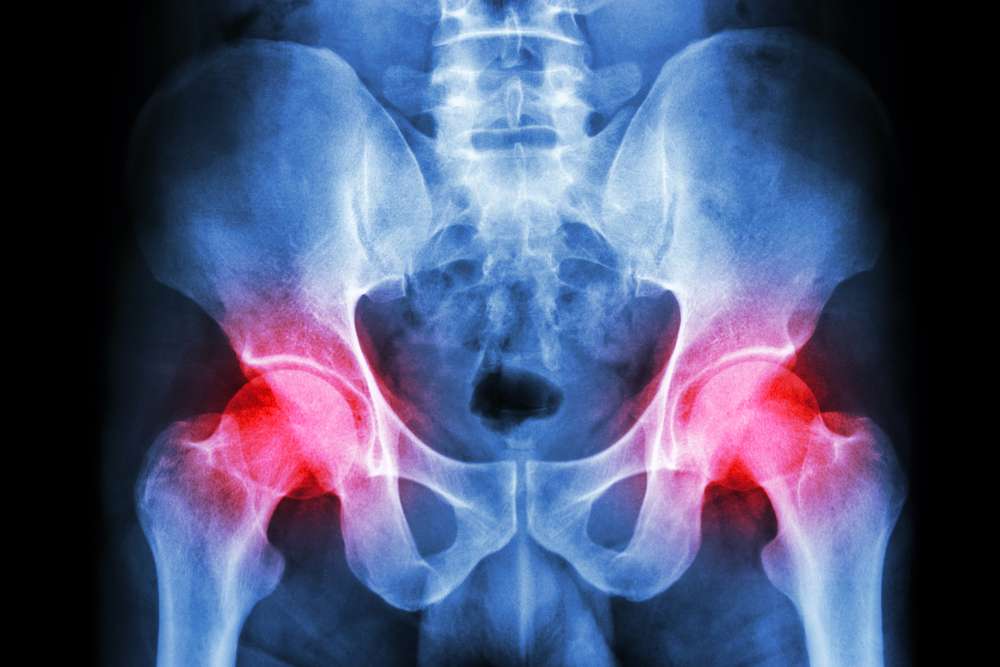“In an age of constant movement, nothing is more urgent than sitting still.” – Pico Iyer
There are times when sitting is either necessary, as when you are working perhaps, or when it is a relief when you’ve been on your feet too long. And then, there are times when sitting quietly with a cup of tea or coffee, and simply contemplating while enjoying the sunshine is a sublime pleasure.
But if your hips are in pain, sitting can become unbearable after a while.
Chronic or Recurring Hip Joint Pain – Symptoms and Causes
One common cause of hip pain among more athletic and physically active people is hip flexor pain.
Typically, hip flexor pain results from muscle strains and minor ligament sprains that can be caused by overuse. These less serious acute injuries often heal in a brief period of time with little or no treatment.
However, chronic or recurring hip flexor pain may be a sign of a more serious injury.
Hip tendonitis (or hip flexor tendinitis) is a swelling of the tissues (tendons) connecting flexor muscles to the bone in the hip joint. Hip tendonitis is typically caused by overuse of the tendons, such as from running. The symptoms typically include pain that feels like a dull ache along with general stiffness.
There are several pathological causes for hip joint pain, as well, such as bursitis which develops when the fluid-filled sacs that reduce friction between muscle, tendons, and bones, known as bursae, become irritated and swollen.
Other common causes of hip joint pain, especially in older adults, include Rheumatoid Arthritis, or RA, and Osteoarthritis.
Then there are more acute pain issues such as hip strain.
Hip strain occurs when you overstretch or tear any muscles and tendons that help your hip joint move. Similar to this is a hip sprain when it involves a ligament.
Hip strain can affect other muscles such as your hip flexors, glutes, abductors, adductors, quadriceps, and even your hamstrings. The affected area might also swell, weaken, and hurt, especially when you use it.
While not isolated in the hip, sciatica pain can also show up there as a dull, constant pain that worsens when you put pressure on your hip, as when lying on your side for example, or it can be mild, sharp, tingly, numb, or even like an electric shock.
Relief from Hip Pain Requires Action
Regardless of the reason, hip pain can be frustrating and even debilitating for people. And finding relief from the pain may require a visit to a medical professional to rule out conditions such as RA, osteoarthritis, or possible injuries such as a hip fracture or a labral tear.
A labral tear results when the hip labrum, the cartilage at the bony edge of your hip socket that helps keep the joint together, is damaged. This can happen from a twisting fall or an accident, or from long-term wear resulting from repetitive motion over time.
An effective solution for many types of hip pain is exercise.
According to one surgical center’s website,
“It’s important to have a regular exercise routine for many reasons, and decreasing hip pain is one of them. If you are not currently in pain, exercise can help strengthen your muscles and increase your range of motion, allowing you to avoid this injury. If your hip pain is already present, you should consider modifying your exercises to ones that are less stressful on your joints. This includes walking on a flat trail or treadmill and doing yoga that does not overextend the hip joint. Another great way to exercise is to walk or perform aerobic exercises in shallow water.”
For many types of chronic or recurring hip pain, however, something more is required.
Fortunately, treatments such as Active Release Techniques® can be effectively applied for relief of pain resulting from conditions such as nerve impingement in or near the hip joint, hip flexor sprains, and by breaking up adhered and unhealthy tissues built up from overuse and repetitive movement to your hip muscles and tendons.
Walking Away from Chronic Hip Pain with Pain and Performance Solutions
Your first step is to make an initial appointment with Pain and Performance Solutions – literally a step towards relief from hip pain and discomfort.
The first thing we do is learn about your present discomfort as well as any history of pain. After completing a full examination, we can then determine the best form of treatment for you and start you along your road to recovery.
The actual source of hip pain can be challenging to accurately locate and identify. This is due to the tendency of our bodies to often compensate for that pain to allow us to get through the day with less pain.
However, because our bodies alter our normal movement patterns to compensate for our discomfort, this now dysfunctional movement pattern often leads to other areas of pain.
The good news is that it’s possible for us to accurately locate and identify the real source of your pain and then apply the best therapies for bringing relief.
Attaining chronic pain relief with therapies such as Active Release Techniques® (ART®) and Anatomy in Motion (AiM), for example, happens once we understand where your pain started. Often this can mean it started previously with another injury you might have sustained.
When it comes to finding pain relief with Pain and Performance Solutions, your trust in us and your transparency is key.
Getting your body to work properly and healthy is the only way to achieve total recovery. So, don’t hesitate to reach out. We are here to help and will answer any, and all questions that you may have.
You can reach us at (707) 636-4404 or by filling out our online contact form.
